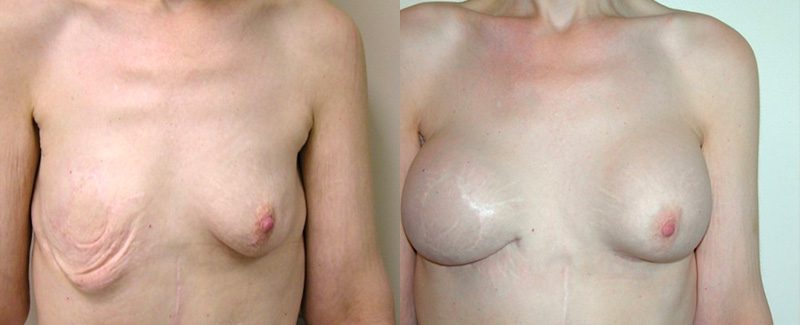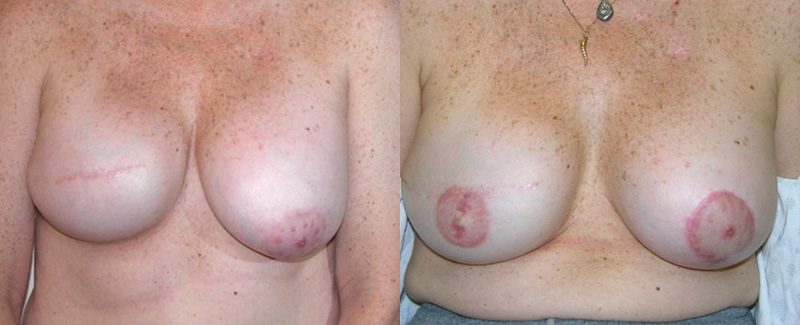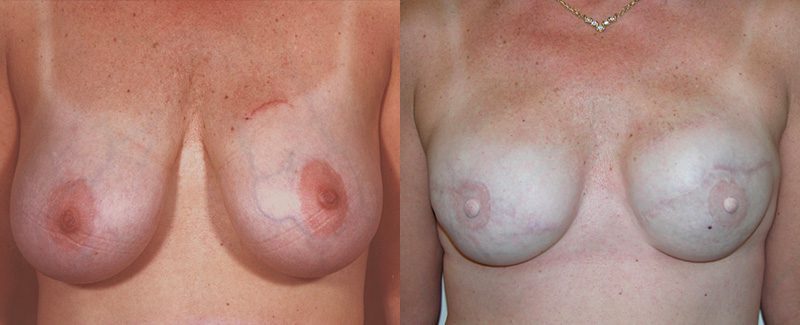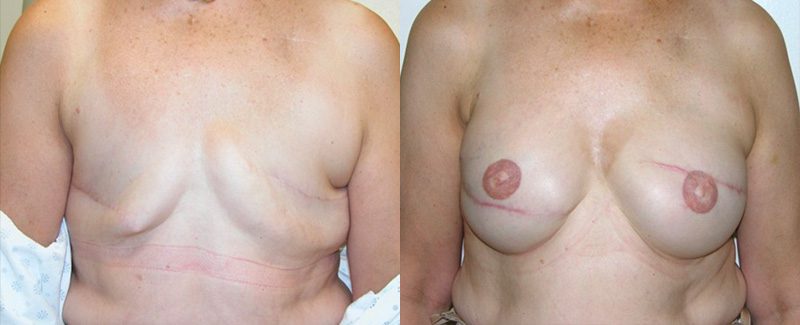Breast Reconstruction
What Is Breast Reconstruction?
Breast cancer affects hundreds of thousands of women each year. During treatment, a mastectomy may be performed to remove the breast containing the cancerous tissue. Sometimes a prophylactic mastectomy is indicated on the opposite breast as well. This leaves the woman without any breast volume, shape, or symmetry. Many women feel less feminine after their mastectomy, saying that they feel as if their sexuality has been taken from them. Breast reconstruction using implants or free tissue transfer can successfully help women regain a level of control over their lives. Schedule a Breast Reconstruction consultation with Dr. J. Brian Boyd in South Bay.
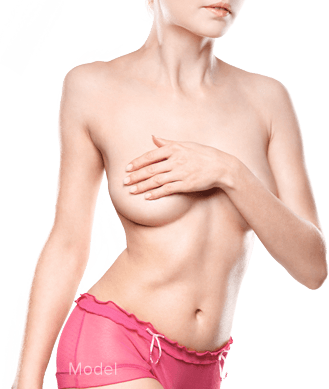
The Benefits of Breast Reconstruction
- Restores your feminine curves and silhouette
- Creates symmetry after unilateral mastectomy
- Increases your confidence
- Allows clothing to fit better
Reclaiming your body after cancer can be very empowering
Common Procedures for Breast Reconstruction
- Description
- An expander is placed in the breast to make room for the permanent implant
- The permanent implant can be saline (silicone shell filled with a saltwater solution) or silicone (silicone shell filled with cohesive silicone gel)
- Human-derived collagen products (such as Alloderm) are used with the patient’s pectoral muscle to create a well-protected implant pocket
- Advantages
- An expander allows a patient to finish radiation therapy before having definitive reconstruction
- A patient can decide on her final breast size and shape
- Reinforcing the pectoral pocket helps to accurately project and position the implant
- Recovery period is quicker
- No additional body scarring
- Disadvantages
- Requires multiple surgeries and recovery times
- Differences in feel between the breasts may be noticeable in patients undergoing unilateral reconstruction
- Implant placement is not recommended in patients undergoing radiation therapy
- Description
- Utilizes perforator flaps that harvest skin and fat from donor sites and transfer them to the chest
- The most common area harvested from is the abdomen (DIEP flap), but other areas that can be used include the buttocks (SGAP flap), inner thigh (TUG flap), and the back (TDAP flap)
- The surgeon takes tissue and leaves the muscle intact
- Preservation of muscle allows the patient to maintain normal physical and athletic functions
- Advantages
- It is typically easier to match tissues to create a natural looking and feeling breast, especially for patients who have undergone a unilateral mastectomy
- Patients receive the added benefit of a tummy tuck, a butt lift or a lower body lift
- When compared to the old TRAM flap technique, patients have a faster recovery time and a much lower risk of developing hernias, bulges, and core weakness
- Disadvantages
- Generally has a longer and more challenging recovery than implants
- Patients will have scars at harvesting sites, which will fade over time
- Patients who do not have enough excess fat and skin tissue cannot undergo this treatment
- Patients who smoke, are obese, or have diabetes are not ideal candidates for this type of surgery
Important Procedure Considerations
It is important for both the patient and doctor to remember that every person is unique. The method of reconstruction is tailored to each individual's requirements. Factors that may influence procedure choice include the patient’s:
- Age
- Goals
- Extent of surgery desired
- Type of cancer
- Overall health condition
- History of smoking and diabetes
- Size and shape of the normal breast
- Active radiotherapy
- Amount of excess body tissue
- Recreational activities and sports
Frequently Asked Questions
Most patients can undergo breast reconstruction at the time as their mastectomy (immediate reconstruction). This would be pre-planned with your operating surgeon. In some cases, the need for chemotherapy and radiation requires the postponement of definitive breast reconstruction. Dr. Boyd works with patients who require both immediate and delayed reconstruction.
In 1998, it became federal law that insurance companies who cover mastectomies must also cover breast reconstruction. This includes the reconstruction of the removed breast, surgery to the other breast to create symmetry, and external breast prostheses that are needed before or during reconstruction.
It is a common myth that implants will either a) cause cancer to develop or b) prevent its detection. Breast implants will not affect your remission. If your cancer does come back, your implant(s) should not cause a problem with undergoing radiation or chemotherapy. If your cancer does come back, your implant(s) should not cause a problem with undergoing radiation or chemotherapy. However the radiation may cause problems with the implants. If so, Dr. Boyd will advise you on your options.
Breast reconstruction does not restore sensitivity to the breast(s) or nipple(s). Over time, the skin may regain sensitivity, but it won’t feel exactly as it did before.
In most cases, nipple reconstruction is performed about four months after the initial surgery, which allows the breasts to have time to heal. It is often performed with other balancing and scar revision procedures to obtain the best aesthetic results possible.
